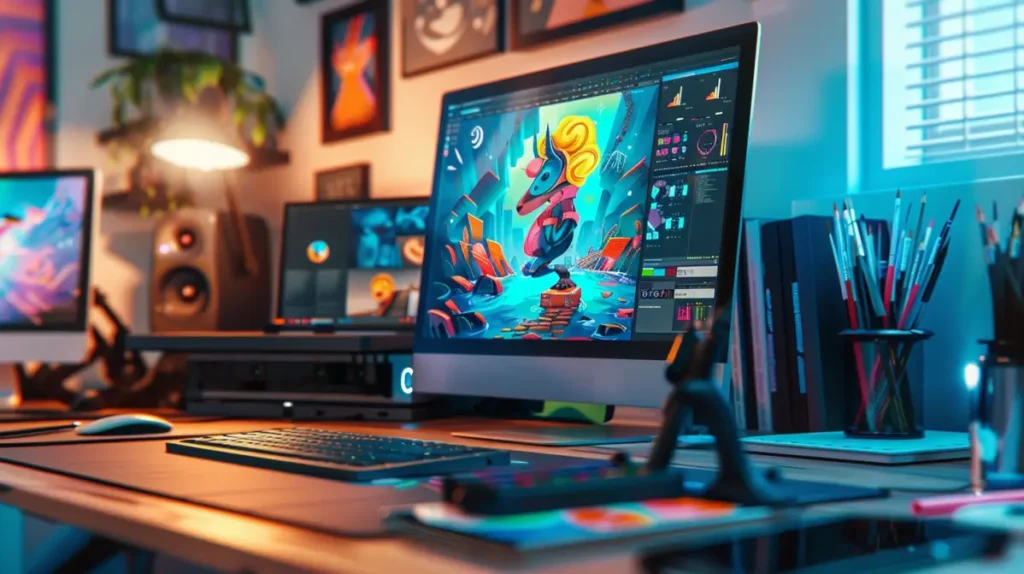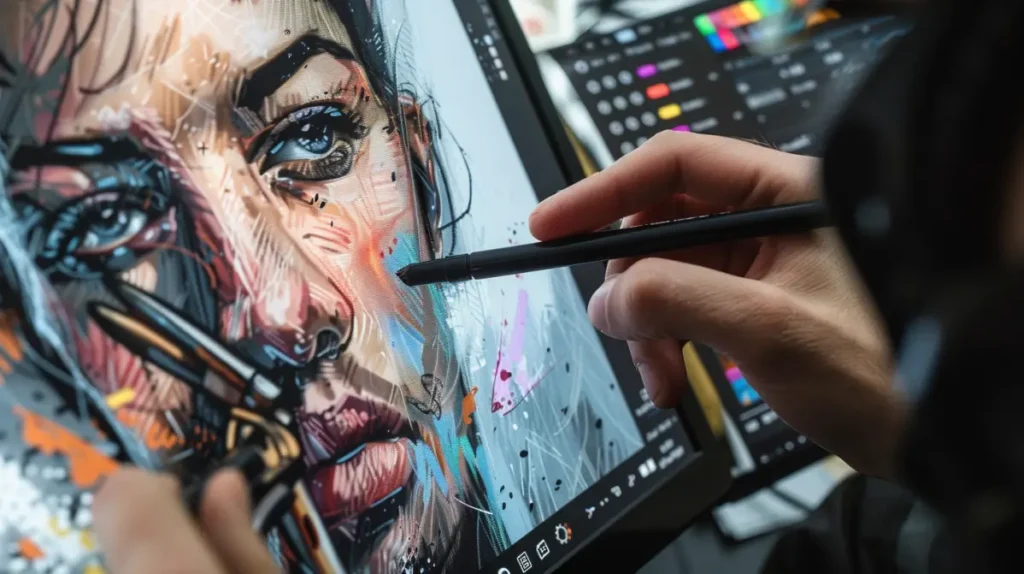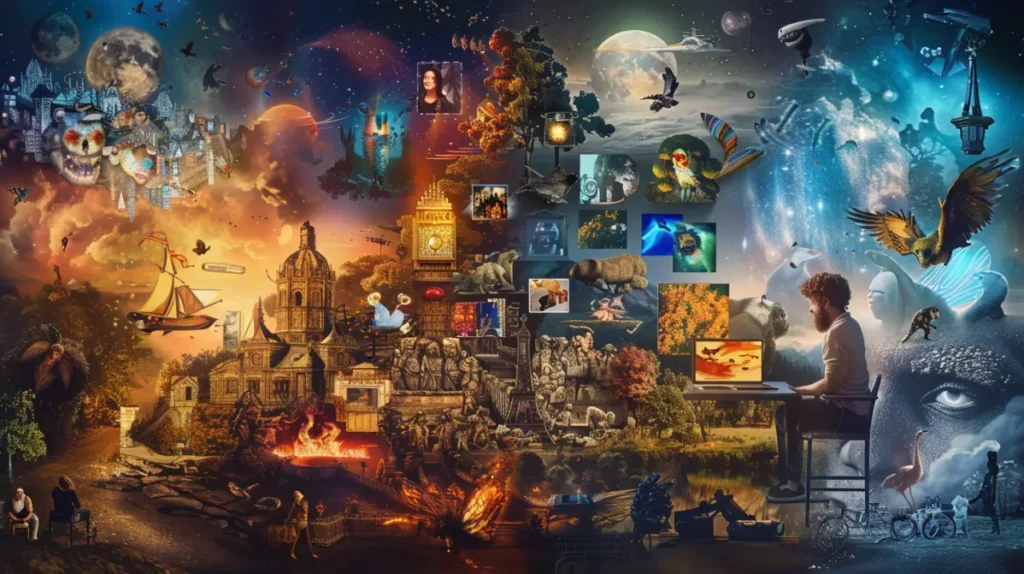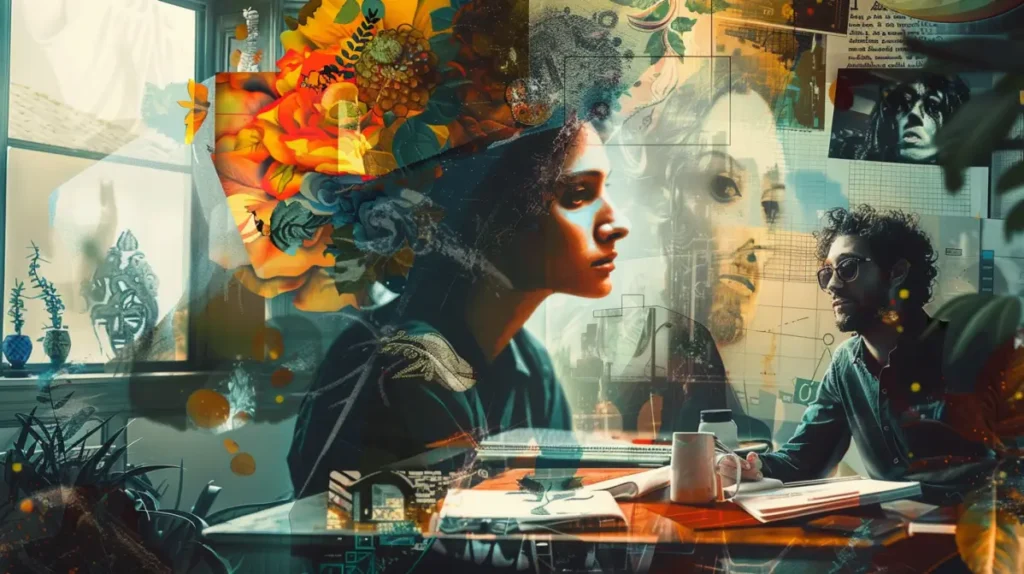Introduction

Welcome to “The Ultimate Guide to the Illustrator Job Description: What Employers and Candidates Need to Know”. Whether you’re aiming to hire the next great illustrator or hoping to become one yourself, this guide is tailored just for you.
If your goal is to find the best job description template on the market to use as a foundation for drafting your hiring specifications, look no further. The link below offers a direct download to our complimentary Illustrator Job Description template. This document integrates the fundamental principles and top practices of C9Staff’s hiring methodology, ensuring you attract top talent with a clear, comprehensive, and compelling job listing. Download now and streamline your hiring process with our expertly crafted template.
ILLUSTRATOR JOB DESCRIPTION TEMPLATE

In this comprehensive resource, we’ll dive deep into the essentials of what makes an illustrator successful and what employers need to look for when selecting the ideal candidate. From detailing the typical job responsibilities and required skills to exploring how these roles are transforming across various industries, this guide covers all bases.
For employers, understanding the shades of the job can help you craft a job description that not only captures the essence of what you need but also attracts the top talent. For candidates, knowing what the market demands enables you to align your skills and aspirations accordingly, ensuring that you stand out in a competitive field.
By the end of this guide, you’ll have a clearer understanding of:
- The Day-to-Day: What are the main tasks and creative projects an illustrator tackles?
- Skill Set: Which technical and soft skills are paramount?
- Evolving Roles: How is the illustrator’s role changing with technological advancements and new industry needs?
Prepare to gain actionable insights and practical tips that will equip you to either find the perfect illustrator or land your dream job. This article isn’t just a navigation guide—it’s a roadmap to excelling in the dynamic world of illustration.
So, let’s get started, ensuring every detail enriches your understanding and empowers your decisions in the artful journey of illustration.
Discover the World of Illustration: What Does an Illustrator Do?
Understanding the Role of an Illustrator

Welcome to the multifaceted and dynamic world of illustrators—a realm where creativity meets precision and vision transforms into vivid reality. As an illustrator, your canvas stretches far beyond the traditional; it encompasses everything from the initial flicks of conceptual sketches to the polished precision of final digital artworks. Imagine crafting detailed storyboards that breathe life into animated characters, developing intricate layouts for glossy print media, or designing sleek, user-friendly assets for digital interfaces. Each project offers a unique blend of artistic challenge and creative satisfaction.
Diverse Work Environments
Your journey as an illustrator might take you through a variety of workspaces, each influencing your creative process and lifestyle in distinct ways. In the collaborative buzz of an agency setting, you’re part of a team, brainstorming ideas and merging aesthetics to meet client visions. This environment is fast-paced and deadline-driven, ideal for those who thrive on feedback and rapid iteration.
Alternatively, you might find yourself in a corporate in-house team where consistency and brand alignment are paramount. Here, the pace might be more measured, but the demand for creativity remains high, often within specific brand guidelines. This setting offers stability and the opportunity to deeply influence a single brand’s artistic direction.
Or perhaps you’re navigating the freedom and challenges of freelance work. As a freelancer, you manage a diverse portfolio, setting your own schedules and chasing opportunities across industries. This path offers flexibility but requires a robust set of management skills and self-discipline to juggle various client needs and maintain a steady income.
Role Variations Across Industries
As you pivot between industries such as publishing, advertising, and digital media, the role of an illustrator adapts and evolves. In publishing, your focus may be on precision and detail, bringing stories to life with imagery that captures the essence of written words without overshadowing them. The publishing industry values illustrators who can think visually and work within tight thematic confines.
In the fast-paced world of advertising, your illustrations need to grab attention quickly, convey messages in an instant, and often persuade or call to action. Here, creativity is not just about beauty; it’s about effectiveness and innovation under pressure.
The digital media landscape offers an expansive arena for illustrators, where interactive designs and UX/UI elements become part of your repertoire. This sector often demands a continuous update of skills, keeping pace with technological advancements that can redefine your workflow and expand your creative toolkit.
Key Skills and Qualifications

To excel as an illustrator, mastering essential technical skills is paramount. You need to be proficient in industry-standard software such as Adobe Illustrator, Photoshop, and other tools like CorelDRAW and Procreate. Adobe Illustrator is crucial for creating vector graphics, which are essential for logos, icons, and other scalable illustrations. Photoshop, on the other hand, is indispensable for digital painting, photo manipulation, and creating complex artwork with multiple layers.
Imagine you’re tasked with designing a detailed poster for a new movie. You’ll use Illustrator to create crisp, scalable vector elements, ensuring they look sharp at any size. Then, you might switch to Photoshop to add textures, colors, and special effects, giving your artwork depth and vibrancy. This combination of skills allows you to handle a wide range of projects, from clean, minimalist designs to richly detailed compositions.
But technical prowess alone isn’t enough. Equally important are the soft skills that enhance your ability to work effectively and creatively. Strong communication skills are vital for understanding client briefs and conveying your ideas clearly to team members. Creativity is at the heart of illustration, enabling you to generate original concepts and bring fresh perspectives to projects. Teamwork allows you to collaborate seamlessly with others, integrating diverse ideas and feedback into your work. Adaptability is essential for navigating changes and unexpected challenges, whether it’s a sudden shift in project direction or learning a new tool on the fly.
Consider a scenario where you’re part of a design team working on a major advertising campaign. Effective communication ensures that everyone’s vision aligns, while your creativity sparks innovative ideas that set the campaign apart. Teamwork helps you integrate feedback from various departments, and your adaptability keeps you resilient in the face of tight deadlines and evolving client demands.
When it comes to formal education, there are multiple pathways to becoming a successful illustrator. A Bachelor’s degree in Fine Arts, Graphic Design, or Illustration provides a solid foundation in artistic techniques, theory, and digital tools. These programs often include portfolio development, which is crucial for showcasing your skills to potential employers.
However, traditional degrees aren’t the only route. Many illustrators enhance their skills through online courses, workshops, and certifications. Platforms like Coursera, Skillshare, and Udemy offer specialized courses in digital illustration, character design, and more. These alternatives can be particularly valuable if you’re looking to pivot into illustration from another field or if you prefer a more flexible learning schedule.
Regardless of your educational background, a strong portfolio is your best asset. It should highlight your versatility, technical skills, and unique style. Include a variety of projects that demonstrate your ability to handle different types of illustrations, from detailed character designs to minimalist icons. Your portfolio is often the first impression potential employers or clients will have of your work, so make it count.
Throughout this journey, remember that continuous learning and practice are key. The field of illustration is constantly evolving, with new tools and techniques emerging regularly. Stay curious, keep honing your skills, and seek inspiration from a variety of sources. Whether you’re an aspiring illustrator or an employer looking to understand what makes a top candidate, these insights can guide you towards excellence in the vibrant and ever-changing world of illustration.
Ready to Become an Illustrator? 5 Essential Steps Before You Start Drawing
For Employers: Crafting the Perfect Job Description

Creating a well-crafted job description is essential because it serves as the first impression potential candidates have of your company. A clear and detailed job description not only attracts the right candidates but also accurately reflects the role’s requirements and your company’s expectations. By investing time in writing an effective job description, you can ensure that you attract qualified illustrators who are genuinely interested and well-suited for the role.
Key Components of a Job Description
Job Title: Start with a job title that is both appealing and specific. Avoid vague titles like “Designer” and opt for something more precise such as “Illustrator – Digital Media” or “Senior Illustrator – Character Design.” This specificity helps candidates immediately understand the role and its focus.
Job Responsibilities: Provide a comprehensive list of typical tasks and projects the illustrator will handle. For example:
Create detailed and creative illustrations for print and digital media.
Develop storyboards for animations and video content.
Collaborate with the marketing team to design compelling graphics for advertising campaigns.
Produce vector graphics and digital paintings using software like Adobe Illustrator and Photoshop.
Revise and refine illustrations based on client feedback and project requirements.
Qualifications: Detail the necessary technical skills, soft skills, and educational requirements. This might include:
Proficiency in Adobe Illustrator, Photoshop, and other relevant software.
Strong communication skills for collaborating with clients and team members.
Creativity and originality in developing unique concepts and designs.
Ability to work effectively in a team and adapt to changes and challenges.
A Bachelor’s degree in Fine Arts, Graphic Design, Illustration, or a related field, or equivalent experience.
Benefits and Perks: Highlight the benefits and perks of the job to make it more attractive. Include details such as:
Competitive salary based on experience and skill level.
Health benefits, including medical, dental, and vision coverage.
Opportunities for professional growth and development.
A creative and dynamic work environment.
Flexible working hours and remote work options.
Example Snippets of Effective Job Descriptions
To illustrate how to write each section in a way that is clear, concise, and engaging, here are some example snippets:
Job Title: “Senior Illustrator – Character Design”
Responsibilities: “Develop and create original character designs for animation projects, ensuring each character is visually engaging and fits within the project’s style guidelines.”
Qualifications: “Must be proficient in Adobe Illustrator and Photoshop. Strong creativity and ability to produce unique character designs. Excellent teamwork and communication skills. A Bachelor’s degree in Fine Arts or related field preferred.”
Benefits: “We offer a competitive salary, comprehensive health benefits, opportunities for career advancement, and a vibrant, collaborative work environment.”
Balancing Detail with Approachability
When crafting your job description, aim to be detailed yet approachable. Avoid jargon and overly complex language. Instead, write in a way that is both informative and inviting, making sure to convey enthusiasm for the role and your company. This balance will help attract candidates who not only meet the qualifications but also feel excited about the opportunity to join your team.
By following these guidelines and examples, you can craft job descriptions that stand out in the competitive job market. A well-written job description not only attracts top illustration talent but also sets the stage for successful collaborations and projects, helping your company achieve its creative goals.
If your goal is to find the best job description template on the market to use as a foundation for drafting your hiring specifications, look no further. The link below offers a direct download to our complimentary Illustrator Job Description template. This document integrates the fundamental principles and top practices of C9Staff’s hiring methodology, ensuring you attract top talent with a clear, comprehensive, and compelling job listing. Download now and streamline your hiring process with our expertly crafted template.
ILLUSTRATOR JOB DESCRIPTION TEMPLATE

For Candidates: How to Align Your Skills with Job Descriptions
When you’re applying for a job, understanding how to assess your skills in relation to job descriptions is crucial. The first step is to thoroughly read the job listings and identify the key skills and qualifications that employers are looking for. Pay close attention to the specific technical skills, soft skills, and educational requirements mentioned. This will give you a clear picture of what the employer values and what you need to highlight in your application.
Skill Assessment
To start, create a skills inventory. Write down all the technical skills you possess, such as proficiency in Adobe Illustrator, Photoshop, or any other relevant software. Include any specialized skills like character design, digital painting, or vector illustration. Next, list your soft skills, such as communication, creativity, teamwork, and adaptability. Don’t forget to include your educational background and any certifications or courses you have completed.
Once you have your skills inventory, compare it with the job requirements. Highlight the areas where your skills match the job description and note any gaps. This process will help you identify the strengths you need to emphasize and the areas where you might need to improve or gain additional experience.
Tailoring Applications
Now that you have a clear understanding of how your skills align with the job requirements, it’s time to tailor your application. Start with your resume. Customize each section to highlight the skills and experiences most relevant to the job you’re applying for. Use keywords from the job description to make your resume more likely to pass through Applicant Tracking Systems (ATS) used by many employers.
For example, if the job description emphasizes proficiency in Adobe Illustrator and experience with vector graphics, ensure these terms are prominently featured in your resume. Rewrite your resume bullet points to reflect these skills. Instead of a generic statement like “Created various illustrations,” you could write “Developed detailed vector illustrations using Adobe Illustrator for a range of digital media projects.”
Your portfolio is equally important. Tailor it to showcase your best work that aligns with the job description. If the position is for a character designer, make sure your portfolio includes a variety of character designs. Include brief descriptions that highlight the skills used in each project. For example, “Designed characters for an animated short film, focusing on expressive facial features and fluid movements.”
Career Development Advice
To stay competitive and continuously improve your skills, consider enrolling in short courses and online workshops. Platforms like Coursera, Skillshare, and LinkedIn Learning offer a plethora of courses that can enhance both your technical and soft skills. For instance, you could take a course on advanced Adobe Illustrator techniques, a workshop on creative storytelling, or a class on effective team communication.
Continuous learning is key in the fast-evolving field of illustration. Stay updated with industry trends by following design blogs, joining professional networks, and attending webinars or conferences. This not only keeps your skills sharp but also demonstrates to potential employers that you are proactive about your professional development.
If you’re looking to supercharge your career and find your dream job, click the link below to submit your resume to our talent acquisition department at C9Staff. If your qualifications meet our client requirements, we will be in touch to discuss potential opportunities that align with your skills and aspirations. Take the first step towards an exciting new chapter in your career with C9Staff.

Salary Expectations and Career Progression

Understanding the factors that influence salary ranges for illustrators can help you set realistic expectations and make informed career decisions. Several key variables affect earning potential, including location, experience, and industry.
Salary Ranges
Location plays a significant role in determining salaries. Illustrators working in major cities like New York, Los Angeles, or London tend to earn higher salaries compared to those in smaller towns or rural areas. This difference is often due to the higher cost of living and greater demand for creative professionals in urban centers. For example, an illustrator in New York City might earn an average of $70,000 per year, while a similar position in a smaller city might offer around $50,000 annually.
Experience is another crucial factor. Entry-level illustrators can expect to start at the lower end of the salary spectrum, but as you gain experience and build a strong portfolio, your earning potential increases. Senior illustrators with extensive experience and a proven track record can command significantly higher salaries. For instance, a junior illustrator might earn $40,000 per year, whereas a senior illustrator could earn upwards of $80,000 or more.
The industry you work in also influences your salary. Illustrators in advertising and marketing often earn higher salaries due to the commercial nature of their work, which directly impacts business revenue. In contrast, illustrators in publishing or educational fields might earn less, as these industries typically have tighter budgets. For example, an illustrator in advertising might earn $75,000 per year, while one in educational publishing might earn $55,000.
Career Pathways
Illustration offers numerous career pathways and opportunities for growth. You can start as a junior illustrator, focusing on developing your skills and gaining experience. With time and dedication, you can advance to senior illustrator roles, taking on more complex projects and responsibilities.
Beyond the traditional illustrator roles, there are opportunities to transition into leadership positions such as art director or creative director. These roles involve overseeing creative teams, managing projects, and ensuring the overall visual direction aligns with the client’s or company’s goals. For example, an illustrator with a knack for leadership and a keen eye for design might move up to an art director position, earning a higher salary and enjoying greater creative influence.
Specializing in niche areas can also open up new career opportunities. Medical illustration, for instance, requires a unique blend of artistic skill and medical knowledge, often leading to higher salaries due to the specialized expertise required. Similarly, concept artists for video games or film can find lucrative opportunities in the entertainment industry. For example, a concept artist for a major video game studio might earn significantly more than a general illustrator, with salaries ranging from $80,000 to over $100,000 depending on the project’s scale and complexity.
Negotiation Tips
For candidates, negotiating salaries can be daunting, but preparation is key. Start by researching industry standards and benchmarking salaries for similar roles in your location and industry. Websites like Glassdoor, Payscale, and LinkedIn Salary can provide valuable insights. When preparing for negotiations, compile a list of your accomplishments, skills, and experiences that demonstrate your value. Practice articulating these points confidently and be ready to discuss how your contributions can benefit the employer.
For employers, offering competitive salaries and benefits is crucial to attracting and retaining top talent. Conduct market research to ensure your salary offerings are in line with industry standards. Be transparent during salary negotiations, clearly outlining the benefits and opportunities for growth within your company. Consider offering additional perks such as flexible working hours, professional development opportunities, and health benefits to make your job offer more attractive.
Throughout your career, staying informed about salary trends and continuously developing your skills will help you navigate salary expectations and career progression confidently. Whether you’re an aspiring illustrator looking to understand your earning potential or an employer aiming to attract the best talent, these insights can guide you towards achieving your goals in the dynamic world of illustration.
The Future of Illustration Jobs
As the world of illustration evolves, emerging tools and technologies are opening new avenues for creativity and expression. Innovations such as virtual reality (VR) and augmented reality (AR) are transforming the way illustrators work and engage with audiences. VR allows illustrators to create fully immersive environments, while AR overlays digital elements onto the real world, adding a new layer of interactivity. Advanced digital illustration software like Procreate and Adobe Fresco are also enhancing creative capabilities with features like real-time collaboration, AI-driven tools, and more intuitive interfaces.
For example, illustrators are using VR to develop virtual art galleries where viewers can walk through and experience art in a 3D space. AR is being used to create interactive children’s books where illustrations come to life on a tablet screen, adding dynamic elements to traditional storytelling. These technologies are not just enhancing the art itself but also the way audiences experience and interact with it.
Evolving Demand in the Digital Age
The rise of digital media has significantly changed the landscape for illustrators. There is a growing need for digital content across various platforms, including social media, mobile apps, and online marketing. This shift is expanding job opportunities in fields such as UX/UI design, game design, and motion graphics.
For instance, social media platforms continuously seek eye-catching visuals to captivate their audiences, leading to a high demand for skilled illustrators who can produce engaging content quickly. Mobile app developers require illustrators to design intuitive and visually appealing interfaces. In the gaming industry, concept artists and character designers are essential for creating immersive gaming experiences. Data shows a steady increase in job postings for digital illustrators, highlighting the growing demand for these skills in the modern job market.
Staying Relevant in a Changing Landscape
To stay competitive and relevant in this rapidly changing landscape, illustrators must keep their skills updated and remain adaptable to new technologies and industry trends. Continuous learning is crucial. Taking online courses, attending industry conferences, and participating in professional networks can help you stay ahead of the curve.
Platforms like Coursera, Skillshare, and LinkedIn Learning offer a wide range of courses that can enhance your technical and creative skills. For example, you could take a course on the latest digital illustration techniques, learn about AR/VR development, or improve your proficiency with new software tools. Industry conferences and webinars are also excellent opportunities to learn from experts, network with peers, and stay informed about the latest trends and technologies.
If you’re interested in exploring how C9Staff can help you source, recruit, hire, train, manage, and deploy the best fit for your Illustrator Job Description, click the link below to schedule a free exploratory call with one of our account managers today. During the call, we will listen to your needs carefully and endorse potential candidates for free, helping you evaluate the absolute best talent possible at competitive prices. Take the next step towards building your ideal creative team with C9Staff’s expert guidance.

Conclusion

As we wrap up, let’s revisit the key points we’ve covered and their significance for both employers and candidates.
We began by understanding the multifaceted role of an illustrator, exploring the diverse tasks and creative projects they undertake. From conceptual sketches to final digital artworks, illustrators bring stories and ideas to life across various industries.
Next, we dug into the essential skills and qualifications illustrators need. Technical proficiency in tools like Adobe Illustrator and Photoshop is critical, but so are soft skills such as communication, creativity, teamwork, and adaptability. Educational paths, including degrees and certifications, play a significant role in preparing illustrators for success.
For employers, crafting a well-thought-out job description is paramount. A clear and detailed job description attracts the right candidates by accurately reflecting the role’s requirements and your company’s expectations. We broke down the essential components of a job description and provided examples to guide you in creating compelling listings.
Candidates learned how to align their skills with job descriptions effectively. By assessing their skills, customizing resumes and portfolios, and pursuing continuous learning, they can increase their chances of landing their desired roles. Career development advice highlighted the importance of staying competitive through short courses and online resources.
We explored salary expectations and career progression, discussing factors that affect salaries such as location, experience, and industry. We also outlined various career pathways and provided negotiation tips for both candidates and employers.
Finally, we looked at the future of illustration jobs, focusing on emerging tools and technologies, evolving market demand, and the importance of staying relevant. Continuous learning and adaptability are crucial in navigating the rapidly changing landscape of digital media and illustration.
For employers, it’s essential to craft thoughtful and comprehensive job descriptions that truly represent the role and attract top talent. Invest time in understanding what makes a job listing stand out and how to convey your company’s unique culture and values.
For candidates, embrace the journey of continuous learning and skill development. Stay curious, keep honing your craft, and be adaptable to new technologies and industry trends. By doing so, you’ll remain competitive and ready to seize opportunities in the ever-evolving field of illustration.
As we look to the future of the creative industry, consider this quote from artist Pablo Picasso: “Everything you can imagine is real.” What innovations and trends will shape the next era of illustration? How will you adapt and thrive in this dynamic field? The possibilities are limitless, and your journey is just beginning.




